PVC Materials hardness transferred from P% to Shore A standard
What refers to the PVC hardness?
Polyvinyl chloride (PVC) is a widely used thermoplastic polymer that can be found in various applications, from construction materials to medical devices. The term "PVC hardness" refers to the material's resistance to indentation or deformation under pressure. This property is measured using different scales, such as Shore A, and P% rate, which provide numerical values indicating the level of hardness. Understanding PVC hardness is crucial for selecting the right type of material for specific applications. For instance, soft PVC with low hardness may be suitable for flexible tubing or gaskets, while rigid PVC with high hardness may be ideal for window frames or pipes. Factors that affect PVC hardness include molecular weight, plasticizer content, and processing conditions. Therefore, manufacturers must carefully control these variables to achieve consistent quality and performance in their products. Knowing what PVC hardness means and how it relates to product design and manufacturing can help ensure optimal results in various industries where this versatile material plays a vital role.
How to distinguish it in Shore A?
PVC materials are measured with the Shore A standard. This standard provides a reliable and accurate way to determine the level of hardness of PVC materials. The Shore A scale ranges from 0 to 100, with higher numbers indicating greater hardness. PVC materials typically have a range between 50 and 100 on this scale, making them ideal for applications that require durability and strength.
Another way of the PVC hardness: P rate
The hardness of PVC materials is also described by the P% rate, we can accurately measure the level of resistance that these materials have against wear and tear.
The P% rate provides us with valuable information about the hardness of PVC materials. This measurement takes into account factors such as the type of plasticizer used, processing conditions during manufacturing, and other additives that may affect the final product's physical properties. By understanding the P% rate of different PVC materials, manufacturers can select the right grade for specific applications. For example, softer grades may be suitable for flexible tubing or inflatable products while harder grades are ideal for rigid pipes or construction materials. In conclusion, knowing the hardness rating of PVC materials through their P% rate helps ensure optimal performance in various applications while also providing greater value to end-users who rely on these products' quality and longevity.
The hardness of PVC materials can be accurately measured and transferred from their original percentage value to the widely recognized Shore A standard. Because different people from different countries like different ways to describe its hardness, like us, we prefer to use it express at our connector's overmold and cable's strain relief of how many P to its harness.
See the table below for your reference.
| (PHR) | SHORE A |
| 30P | 95±2A |
| 35P | 93±2A |
| 38P | 91±2A |
| 40P | 91±2A |
| 45P | 89±2A |
| 50P | 86±2A |
| 55P | 83±2A |
| 60P | 80±2A |
| 65P | 77±2A |
| 70P | 75±2A |
| 75P | 73±2A |
| 80P | 70±2A |
| 85P | 67±2A |
| 90P | 64±2A |
| 95P | 61.5±2A |
| 100P | 59±2A |
| 110P | 57±2A |
45P PVC Material Overmold in Cable Harness Assembly
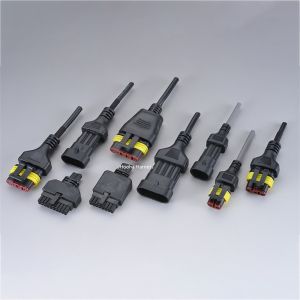
AMP Superseal 1.5 Connector Overmold
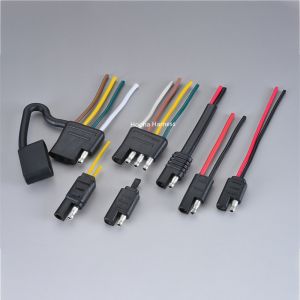
SAE Connector Overmold
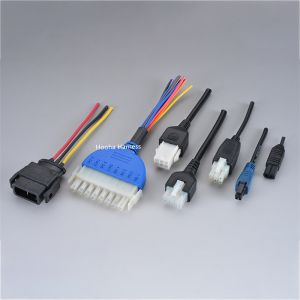
Molex Connector Overmold
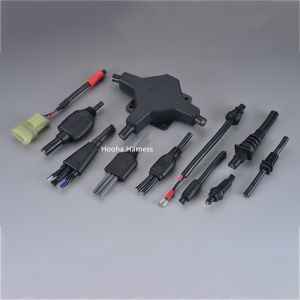
Power Connector Overmold

USB Cable Overmold
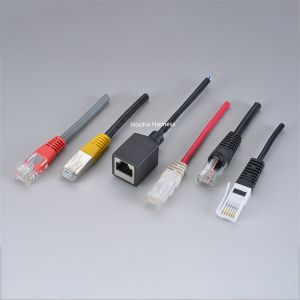
Ethernet RJ45 Connector Overmold
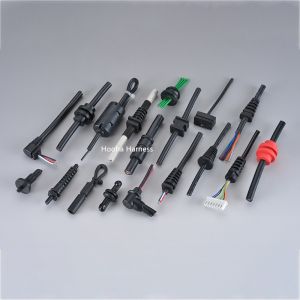
Cable Strain Relief
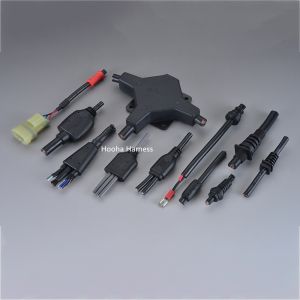
Power Cord Strain Relief
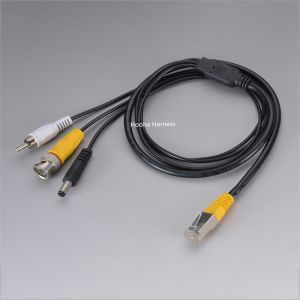
RJ45 DC5525 RCA Plug Overmold
How to Customize Your Cable Connector Overmold?
Send your sample or drawing/schematic for quote price→ Feedback with quotation(1~3 days) → Confirm quotation → Arrange sample you for approval→ [Make mold if needed (7 days) →Mold test] → Making samples(1~3 days)→Samples test(Approval) →place order for Mass production(2~3 weeks)→Quality checking→Packing →Delivery →After Service →Repeat Order.
